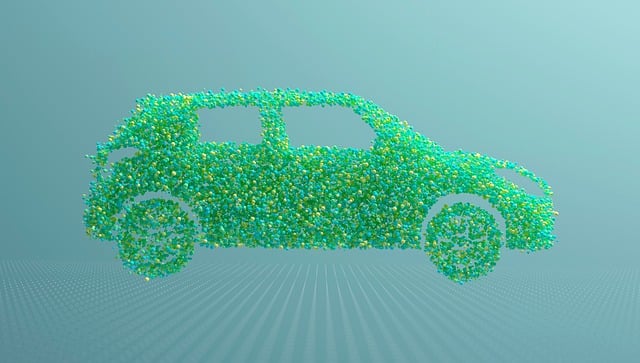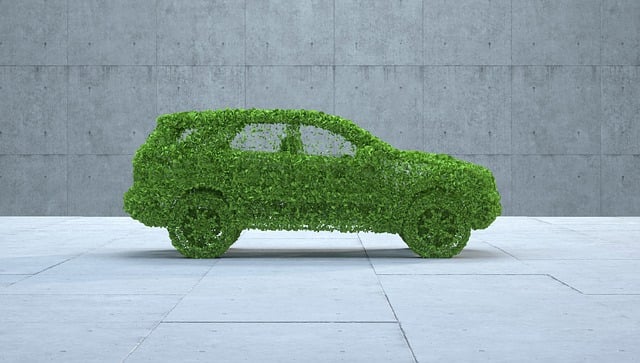The future of green vehicles is driven by electric cars, fueled by environmental awareness and government policies. Infrastructure expansion, technological innovations like biodegradable materials, and urban planning focused on sustainable transport are key. Select Sustainable Vehicles with eco-friendly components and advanced recycling are crucial. Autonomous drive technology promises safer, more efficient navigation for cleaner transportation, while green logistics centers and carbon capture technologies round out a comprehensive approach to sustainable mobility.
The future of transportation is green, and it’s happening faster than ever before. As we navigate an increasingly sustainable world, select sustainable vehicles are at the forefront of this revolution. This article explores three key aspects transforming the green vehicle landscape: the electric revolution and its growing infrastructure, innovative use of sustainable materials to lighten weights and enhance recycling, and the rise of autonomous drives for enhanced safety and efficiency in eco-friendly transport.
- Electric Revolution: Dominance and Infrastructure Growth
- Sustainable Materials: Lightening Vehicle Weight and Recycling
- Autonomous Drive: Safety and Efficiency in Green Transport
Electric Revolution: Dominance and Infrastructure Growth

The future of green vehicles is being revolutionised by electric cars, which are rapidly gaining dominance in the market. This shift is driven by a growing awareness of environmental issues and governments’ efforts to promote sustainable transportation. As consumers become more inclined towards Select Sustainable Vehicles, infrastructure growth is accelerating. Charging stations are expanding across cities, making electric vehicle (EV) ownership more convenient and accessible. The rise of EV charging networks demonstrates a significant step towards embracing clean energy in the automotive sector.
In addition to these developments, advancements in technology are enhancing the overall green vehicle experience. Innovations like biodegradable motor oils for eco-friendly driving and biodegradable car waxes and polishes contribute to reduced environmental impact. Furthermore, urban development is incorporating sustainable transportation planning, which includes designing cities around efficient public transit systems and active modes of transport like cycling and walking. This holistic approach, coupled with the integration of green logistics centers for efficient deliveries and carbon capture technologies for vehicle emissions, promises a cleaner and more sustainable future for mobility.
Sustainable Materials: Lightening Vehicle Weight and Recycling

The future of green vehicles is closely tied to innovation in sustainable materials that can lightening vehicle weight and enable more effective recycling processes. By selecting sustainable vehicles built with eco-friendly components, we can significantly reduce their environmental impact throughout their lifecycle. Electric airport shuttles, for instance, offer a promising solution for reduced pollution, as they eliminate tailpipe emissions and contribute to cleaner air in urban areas.
Green car incentives and rebates for consumers play a crucial role in encouraging the adoption of these innovative vehicles. Similarly, green fleet management practices can greatly benefit businesses by optimizing their transportation needs while minimizing their ecological footprint. Electric cars are particularly appealing for eco-conscious commuters who seek environmentally friendly alternatives that support a greener future without compromising on performance or convenience.
Autonomous Drive: Safety and Efficiency in Green Transport

The future of green vehicles is closely intertwined with advancements in autonomous drive technology. As self-driving cars become more prevalent, they offer immense potential for enhancing both safety and efficiency in sustainable transportation. With sophisticated sensors and advanced algorithms, these vehicles can navigate through complex urban environments, reducing human error and the risk of accidents. This not only ensures safer roads but also optimizes traffic flow, leading to less congestion and lower carbon emissions.
Additionally, autonomous drive systems enable efficient routing, allowing green logistics centers for optimal delivery routes. By integrating smart city infrastructure, these vehicles can seamlessly navigate low-emission zones in major cities, further reducing their environmental impact. Moreover, the development of hybrid battery recycling programs addresses end-of-life considerations, ensuring a circular economy for electric vehicle components while also capturing and utilizing carbon capture technologies for vehicle emissions, contributing to a comprehensive strategy for sustainable mobility.
The future of green vehicles looks bright, with advancements in electric technology, sustainable materials, and autonomous driving paving the way for a more eco-friendly transportation network. As infrastructure grows and adoption increases, selecting sustainable vehicles will become easier, offering consumers efficient, safe, and environmentally conscious options. This shift promises to revolutionise how we navigate our world, ensuring a greener future for all.



